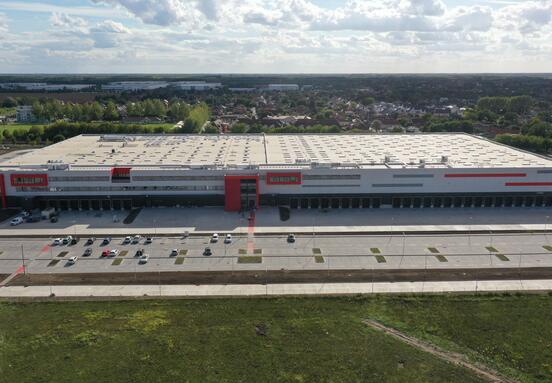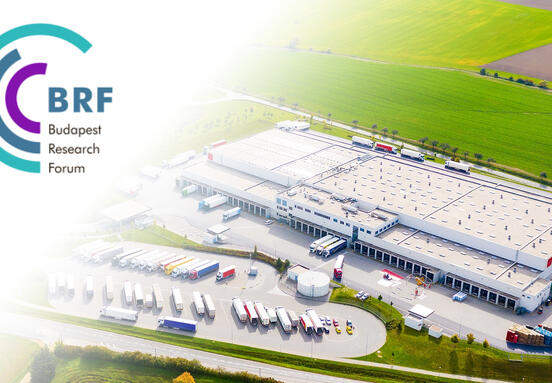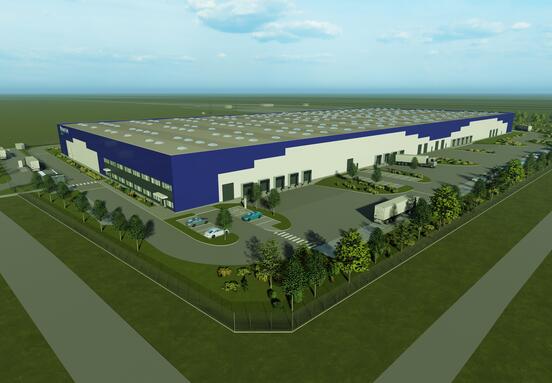Automation has the ability to unlock this potential in a big way.
The logistics real estate sector has been facing shortages on two key fronts: a shortage of skilled labor and of well-located logistics space. Compounding this is the severe capacity crunch in last mile delivery -- shippers and parcel delivery companies cannot handle more packages and are turning away business. Increasingly, customers recognize that automation can help address these issues, and those that do not act now are getting left behind. In examining the tie between real estate and automation in customer operations, we identified four key takeaways:
- The acceleration of structural supply chain trends such as e-commerce could lead to a critical shortage of logistics real estate. In the U.S., new supply could fall short of demand by up to 140 million square feet (MSF) per year over the next five years.1
- Automation has the potential to increase revenue generated per square foot of logistics space. Greater productivity can help offset a lack of available space, most notably in infill locations where vacancy rates are often <1%.2
- E-fulfilment footprints must double in size over the next five years.3 Automation’s ability to enhance productivity is key to meeting e-commerce demand and high consumer expectations.
- Automation offers economic benefits for logistics real estate. Customers that incorporate automation sign longer leases and are more likely to renew, which cuts downtime and related costs.
Prologis Research notes five discrete forces driving demand for logistics space in the near to medium term
- E-commerce. Between 2019 and 2024, U.S. online sales are forecast to grow from about 15% of retail goods sold to more than 25%,4 resulting in about 100 MSF of extra demand per year on top of economic growth.5
- Inventory build. The shift from just-in-time to just-in-case supply chains could drive inventories up by 5-10% or more. In the U.S., this translates to 57-114 MSF of additional logistics demand per year in the next five years.6
- Economic growth. In the U.S., cyclical growth of 1.5-2% correlates with 150-175 MSF per year of demand.7
- Supply chain modernization. In maturing distribution markets such as Europe and Japan, supply chain modernization is an important driver of demand. In Europe, for example, modern logistics stock per household is approximately 3x lower than in the U.S.8 The ongoing process of upgrading Europe’s distribution networks has resulted in absorption outpacing economic growth by 6x over the last decade.9
- Pandemic-related demand. Increased need for medical equipment and vaccine distribution facilities, coupled with ongoing social distancing mandates, should add to near-term space needs.
Labor shortages and capacity constraints are driving the need for highly productive logistics operations. Finding skilled and ready workers is the #1 concern for many e-fulfilment logistics users. In tandem, the availability of logistics space is likely to go from bad to worse as customers urgently seek to build out their supply chain capabilities. The cause: Vacancy rates remain historically low and speculative construction starts fell in both the second and third quarters of 2020.10 This particular challenge will be amplified in locations close to the end consumer, where barriers to supply are highest and labor- and space-intensive e-fulfilment needs are concentrated. An analysis of the broader market shows the potential for a shortfall of 50-140 MSF per year through 2024 relative to normalized levels of supply (prior to considering productivity enhancements or pandemic-related demand).
The fastest-growing segments of automation focus on labor productivity and yield minimal space efficiencies. Most adopters are more focused on shortening order lead times and improving accuracy to offer higher service levels and minimize reverse logistics costs than they are on increasing storage density. In addition to having lower barriers to implementation, mobile/semi-mobile technologies are well-positioned to solve to these Key Performance Indicators (KPIs), driving faster adoption. As detailed in our first installment, automation technologies can be grouped into two categories: fixed and mobile/semi-mobile automation. Full fixed automation systems (e.g., AS/RS) can yield significant space efficiencies, yet barriers to implementation are high. Depending on the type of fixed automation, space efficiencies can range from zero to 50%+ given that more cubic space is used for storage and/or conveyance, and aisles in turn are reduced or eliminated. Mobile and semi-mobile automation yields modest space savings mostly via narrower aisles, ranging from zero to 10%.
Automation increases the revenue generation potential of logistics space. Prologis Research built a sensitivity model to assess the impact of automation on demand. Although space efficiencies are not a primary goal, automation’s impact on productivity could lead to slower growth in real estate footprints if adoption accelerates quickly; in this scenario, users would remain in place versus expanding to larger facilities or moving to better (and, usually, smaller) locations closer to end consumers. We modeled two scenarios: (1) a base case that incorporates a slight acceleration in adoption trends and (2) a stretch adoption case which doubles the pace of automation growth. Results indicate that automation could lead to 36 to 60 MSF less demand per year than if operations were to remain at their 2019 productivity levels. After incorporating these productivity gains, net demand from cyclical and structural trends would still total 263 to 353 MSF per year from 2019 to 2024, using a conservative GDP forecast of 1.5-2%, exceeding long-term average annual supply of 250 MSF under either scenario.
Our model factors in the following:
- Faster automation adoption and productivity growth in e-fulfilment operations due to its labor intensity, as well as the scaling of e-commerce. This brings the e-commerce space intensity multiple from 3.3x brick-and-mortar in 2019 to 2.9x in the stretch adoption scenario.
- Faster adoption of mobile and semi-mobile technologies, based on recent trends and lower barriers to implementation, versus full fixed automation such as AS/RS systems.
- A focus on modern logistics space that can accommodate a wider range of technologies. Prologis Research estimates that modern logistics stock totals roughly 5 billion square feet in the U.S.
Logistics real estate demand is likely to exceed supply even after factoring in effective and fast deployment of automation. Given the complexity of tracking adoption rates in facilities that deploy multiple automation solutions and technologies, we focused instead on likely gains in productivity. In the base case, productivity enhancements stem from the scaling of e-commerce and adoption of mobile and semi-mobile technologies, as well as from modular fixed automation technologies, which yield modest space efficiencies. In the accelerated adoption scenario, we modeled more adoption of full fixed automation solutions that solve for storage density. In sum, revenue generated per square foot of logistics space would grow by 10-20% for e-commerce operations and 3-5% for brick-and-mortar operations (see Exhibit 2), concentrating value creation in supply chains. Under the stretch adoption scenario, new demand would be about 170 MSF above normal levels of supply. In the base case, demand would still exceed supply by 290 MSF using the midpoint of our estimates for cyclical, e-commerce and inventory growth. Pandemic-related demand drivers are excluded from this analysis.
Putting automation to work presents a challenge. In addition to operational barriers to implementation, a surge of interest in automation technologies has led to long wait lists and substantial lead times, especially for more advanced equipment. Our model assumes that 100% of operations in modern facilities are reconfigured for automation in the five-year period and that full space efficiencies are realized. In practice, operations that are functioning well may not be re-examined until conditions or an event prompts action, and other governors on productivity exist outside of commonly automated tasks such as the timing of loading/unloading vehicles. Space efficiencies gained through automation are often re-configured to accommodate additional value-add activities and greater SKUs or left as open space which decreases congestion and improves safety. Finally, skilled labor – currently in short supply - will be needed to keep automation equipment up and running.
Automation lifts the investment performance of logistics assets. Automation is leading to increased investment within facilities, which in turn incentivizes customers to sign longer leases. The top energy users – which are largely automation adopters – sign leases that are on average more than 50% longer than the average logistics occupier (see Exhibit 3).11 Such significant investments, especially for fixed automation, are likely to translate to higher retention rates. Several customers report exploring automation investments to increase site productivity, which would prevent them from having to relocate to accommodate growth. For context, typical move-in capital expenditures are in the range of $25/foot, while highly automated capital expenditures routinely exceed $100/foot.
In Summary
Investments in automation technologies boost the value of the modern logistics facilities needed to flex with the future supply chain. Increased demand for logistics real estate in the next five years will be challenging for customers looking to build capabilities, especially in locations near end consumers. The pandemic has accelerated structural trends already at work and reduced new supply, increasing the likelihood of a critical shortage of space. Automation can bridge this gap by improving productivity, enhancing capabilities and opening up new locations for logistics users.
Prologis








